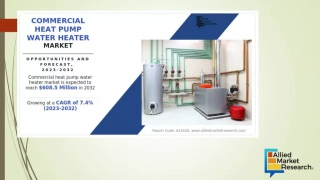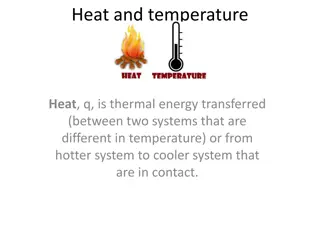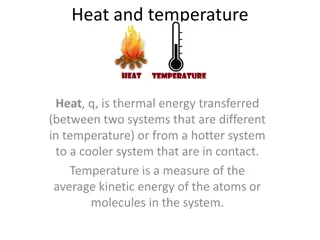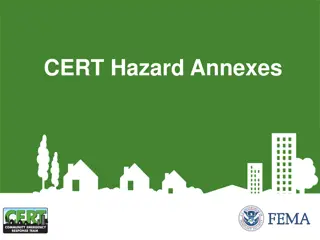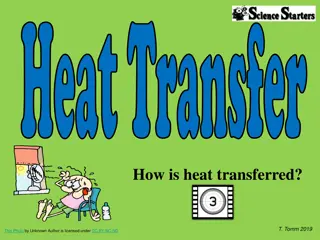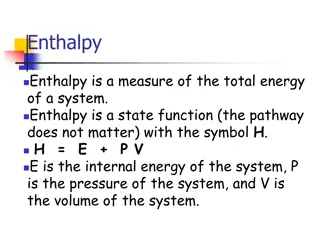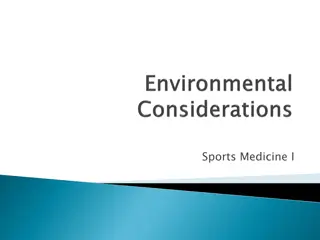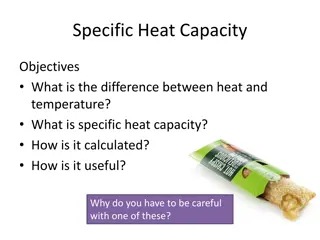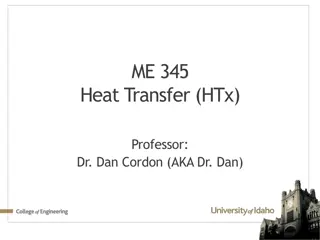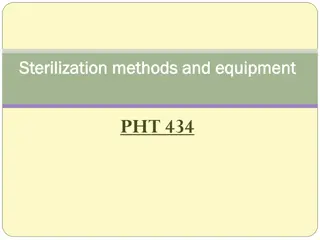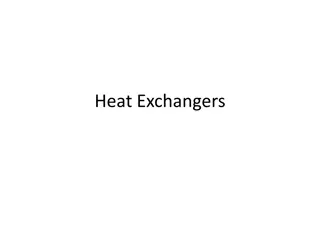Heat Equation Example Problems
In this lecture, Dr. Dan covers example problems related to the Heat Equation, focusing on a pan used to boil water. With illustrations and step-by-step explanations, students learn about the Heat Equation, boundary conditions, and heat flux principles. Get insights on modifying equations, defining variables, and applying mathematical concepts to solve heat transfer scenarios. This comprehensive tutorial prepares students for homework assignments and enhances their understanding of heat transfer processes.
Download Presentation

Please find below an Image/Link to download the presentation.
The content on the website is provided AS IS for your information and personal use only. It may not be sold, licensed, or shared on other websites without obtaining consent from the author.If you encounter any issues during the download, it is possible that the publisher has removed the file from their server.
You are allowed to download the files provided on this website for personal or commercial use, subject to the condition that they are used lawfully. All files are the property of their respective owners.
The content on the website is provided AS IS for your information and personal use only. It may not be sold, licensed, or shared on other websites without obtaining consent from the author.
E N D
Presentation Transcript
ME 345 Heat Transfer (HTx) Professor: Dr. Dan Cordon (AKA Dr. Dan)
WHAT CAN WE DO WITHOUT SOLVING THE HEAT EQUATION We will solve many cases of the Heat Equation. But not yet. To prepare you for your homework this week I want to spend this lecture going through several example problems. These are to get you comfortable with the variables in the Heat Equation.
Textbook Problem 2.27 A pan is used to boil water by placing it on a stove where heat is being transferred at a fixed rate q0. This happens in two stages. Stage 1 the pan and water start at room temperature Ti and are heated until the water reaches the boiling temperature (no boiling has happened yet). Assume a constant q0 entering the bottom of the pan, and heat transferred from the pan to the liquid water by natural convection. Constant convection coefficient may be assumed, and the bulk temperature of the water increases with time. The pan has thickness L and diameter D. For the pan during Stage 1 write the Heat Equation, BCs, and IC that would solve for T(x, t) in the pan (ignoring sides).
Textbook Problem 2.27 Assumptions: 1D conduction through the pan q0 is evenly distributed across bottom of pan Material properties not changing with temperature What does heat flow diagram look like?
Textbook Problem 2.27 Take a moment to modify the general Heat Equation in cartesian coordinates for this problem: k is constant (pull out of partial and divide both sides)
Textbook Problem 2.27 What is the Boundary Condition at x=0? What are fancy names for it? How would you write that in mathematical terms? What is the Boundary Condition at x=L? What are fancy names for it? How would you write that in mathematical terms?
Textbook Problem 2.27 Boundary Condition 1: At bottom of the pan we have a known heat flux (Neumann, or BC of 2nd kind) In this case the known heat flux is:
Textbook Problem 2.27 Boundary Condition 2: At the top surface of the pan we know that all the heat must leave through convection (BC of 3nd kind) At x = L known heat flux is:
Textbook Problem 2.27 Initial Condition: For Stage 1 the pan and water are all at room temperature. At t = 0 we would write: The reduced form of the heat equation, two BCs, and one IC are enough to solve this problem. Note: The bulk water temperature T (t) will change with time. But we could approximate this with qwater = M*c*dT /dt
Textbook Problem 2.27 Summary BC1 BC2 IC qx=L = qwater = mass*c*dT /dt
Textbook Problem 2.29 A 1D plane wall is at steady-state. It is insulated on the left side, constant temperature on the right side, and has uniform internal heat generation. Determine the appropriate form of the Heat Equation. Separate, integrate, and apply BCs to Derive an expression for the heat flux as a function of x q (x) = ___________
Textbook Problem 2.29 Modify the Heat Equation Integrate both sides once and you will get: But surface at x = 0 is insulated, which means: C1 = 0, so (We didn t solve the Heat Equation, but we were able to calculate the heat flux)
Textbook Problem 2.30 Steady-state temperature distribution in a 1D wall with thermal conductivity of 50 [W/m-K] and thickness of 50 [mm] is found to be: ? ? = ? + ? ?2 where a = 200 C, b = -2000 C/m2, and x is in meters Find: a) Heat generation rate in the wall (q_dot) b) Heat fluxes on each wall face
Textbook Problem 2.30 Schematics: Assumptions: Properties don t change with temperature
Textbook Problem 2.30 Since we know the temperature distribution, take derivatives.
Textbook Problem 2.30 Find heat fluxes using Fourier s Law Now check these at x = 0 and x = L What does this mean?
Textbook Problem 2.33 Temperature profiles vs. time for 1D plane wall For each case find: a) Appropriate form of heat equation b) Equation/value for initial condition c) Boundary conditions at x = 0 and x = L d) If heat generation exists, is it uniform? Notes: For 1D the Heat Equation is: When SS: When no heat generation, the SS temperature will be linear (or sometimes constant). With heat generation the SS temperature must be parabolic
Textbook Problem 2.33a For each case find: a) Appropriate form of heat equation b) Equation/value for initial condition c) Boundary conditions at x = 0 and x = L d) If heat generation exists, is it uniform? T(t3) T(t2) SS temp is constant no heat generation T(t1) Heat equation will be: IC: (initial temp is uniform) BC(x=0): Slope is flat for all times. This mean it is adiabatic BC(x=L): For all time above t = 0, temperature is same. This means constant surface temperature
Textbook Problem 2.33b For each case find: a) Appropriate form of heat equation b) Equation/value for initial condition c) Boundary conditions at x = 0 and x = L d) If heat generation exists, is it uniform? T(t1) T(t2) SS temp is parabolic there is heat generation Heat equation will be: IC: (initial temp is uniform) BC(x=0): Slope is flat for all times. This mean it is adiabatic BC(x=L): For all time above t = 0, temperature is same. This means constant surface temperature
Textbook Problem 2.33c For each case find: a) Appropriate form of heat equation b) Equation/value for initial condition c) Boundary conditions at x = 0 and x = L d) If heat generation exists, is it uniform? T(t3) T(t2) SS temp is constant no heat generation T(t1) Heat equation will be: IC: (initial temp is uniform) BC(x=0): Slope is flat for all times. This mean it is adiabatic BC(x=L): Slope changes (decreases) with time. This is likely convection boundary condition
Textbook Problem 2.33d For each case find: a) Appropriate form of heat equation b) Equation/value for initial condition c) Boundary conditions at x = 0 and x = L d) If heat generation exists, is it uniform? T(t2) T(t1) SS temp is parabolic there is heat generation Heat equation will be: IC: (initial temp is uniform) BC(x=0): Slope is flat for all times. This mean it is adiabatic BC(x=L): Slope changes (decreases) with time. This is likely convection boundary condition


